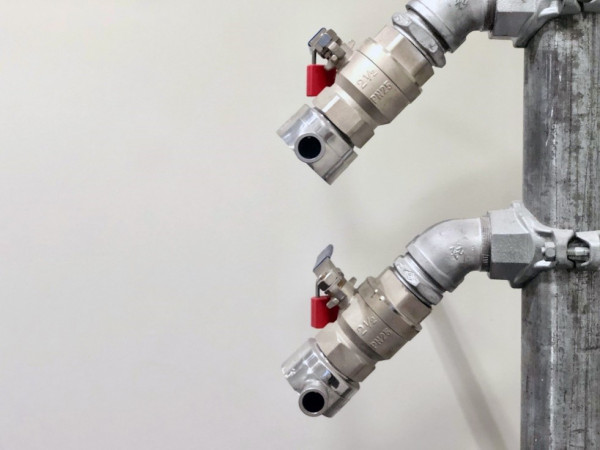NZS 4510 revision consolidates over a decade of fire safety learnings to keep New Zealanders safe
Throughout most large buildings, an essential vein of pipes runs through walls and ceilings, providing water for sprinklers and firefighters in the event of internal fires. Effectively using these, when it matters most, is underpinned by the latest learnings in NZS 4510:2022 Fire hydrant systems.

Fire hydrants with accessible connections in a multi-storeyed building.
From design to deployment
The technical and performance requirements for fire hydrant systems, outlined within NZS 4510, play a crucial role for Fire and Emergency New Zealand’s firefighters to respond effectively and efficiently, and reflect requirements under building and health and safety regulations. Here NZS 4510 helps marry the role of building designers with the needs of first responders to access the designed hydrant systems when needed.
Within metropolitan areas the diversity of buildings and provisions and the variable nature of building fires can be challenges for firefighters, especially without the necessary building plans and standardised infrastructure in place to help them respond to an emergency. With potential lives on the line, standards give firefighters confidence when approaching a fire, so they know what standard in-building systems are in place and whether they match modern standard operating procedures.
A decade of learnings and multiple perspectives
Previous updates have occurred roughly every 10 years, however this revision marks the first update since 2008. Standards New Zealand’s consensus approach brought together perspectives from key stakeholders including first response, councils, fire protection organisations, manufacturers, the building regulator, engineers and builders and housing agencies. Input from emergency responders, specialised fire engineers and operational personnel is essential to support first responders and give the public confidence in buildings and construction.
Standards New Zealand Project Manager Inge Mautz-Cooreman says, ‘Bringing together input from not just Fire and Emergency New Zealand but also the building regulator and those that build and maintain the systems mean the standard works for everybody. Two lots of public consultation provided around 600 comments that helped shape the revision further.’
Knowing where to find hydrants
Esitone Pauga, Response Capability Manager and Area Commander with Fire and Emergency New Zealand acknowledges the need to consider practicalities for first responders ‘In this revision, the rules around locating hydrant outlets have been clarified. Fire can become well established within the time you’ve read this article and within minutes smoke can really hinder visibility, so finding and accessing the hydrants must be as quick and problem-free as possible.’
‘Practicalities for firefighting need considering right at the start when buildings are designed, and this is where standards in building regulations help. Effective hydrants are an essential part of the equation for firefighters to do their job - and having standard building design that includes protection infrastructure makes this easier.’
What to do in a house fire – Fire and Emergency New Zealand(external link)
Importance of pressure
Forcing large volumes of water through an intricate high rise network of piping requires considerable pressure. Incorporating learnings from overseas fires, pressure controls at the various levels of high-rises within multi-storeys has been considered. Requirements for pressure settings, calibration and testing of pressure-control valves can inform firefighters where pressure may be high, or low and requiring a pump to assist.
The previous version didn’t factor in reticulated water that provides a permanently piped source of water for quick response. International incidents whereby the high-risk construction and demolition phases required access to hydrants also helped inform advice for this to be included in this revision.
Standards matter
Whether you’re the building-designer, construction and engineering company, building owner, hydrant system manufacturer or certifier, installation contractor or building user. Having vital hydrant and sprinkler systems that conform to the latest standard, factor in consensus-agreed perspectives of all users and integrate over a decade of national and international learnings, has the potential to save lives and property.
NZS 4510 is sponsored for free access by the building regular Building Systems Performance (BSP) part of the Ministry of Business, Innovation and Employment/Hīkina Whakatutuki (MBIE) to do the right thing and meet the New Zealand Building Code.
